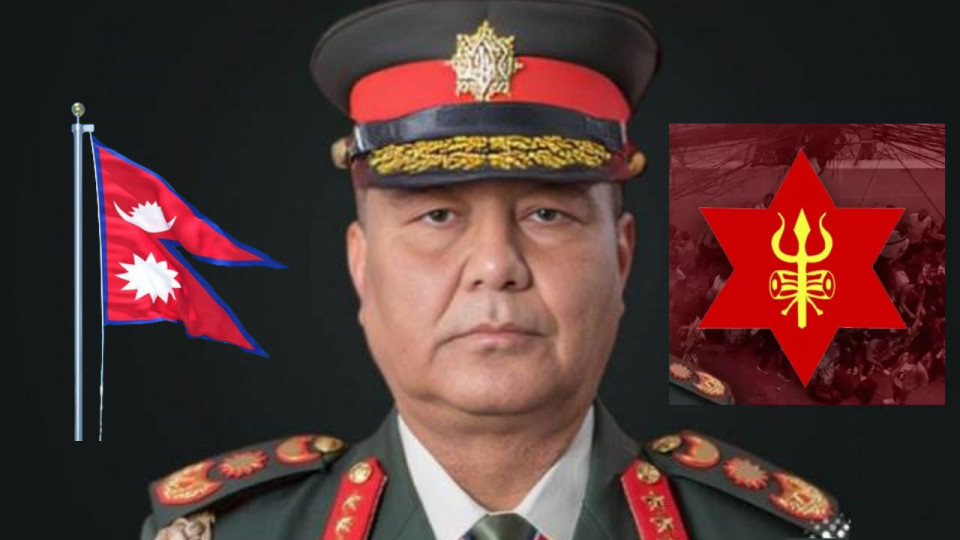
Why the Nepalese Army Marches With Shiva’s Trident: A Glorious History and a Unique Military Tradition With India (Image Source: Social Media/Canva)
Nepal is facing one of the biggest political crises in its history. After Prime Minister K.P. Sharma Oli resigned, the Nepalese Army stepped in to take charge of the situation. The task of restoring peace and stability now lies with Army Chief General Ashok Raj Sigdel, who has emerged as a key figure during this turmoil. Known for his close ties with India, General Sigdel may play an important role in forming Nepal’s new government. Sources say he even advised the former Prime Minister to step down during violent protests to avoid bloodshed. Trained at India’s College of Defense Management in Secunderabad and honored with the honorary rank of General of the Indian Army in 2024, Sigdel stands at the center of Nepal’s crisis and its hopes for stability.
Along with the historical ties between India and Nepal, the military relationship is also very deep. Proof of this is that both countries confer the honorary rank of General in their respective armies upon each other’s Army Chiefs. This practice follows a seven-decade-old tradition of conferring honorary ranks on each other’s Army Chiefs. Commander-in-Chief General K.M. Cariappa in 1950 was the first Indian Army Chief to be honored with this title. Last year President Droupadi Murmu conferred the honorary rank of General of the Indian Army upon Nepal’s Army Chief General Ashok Raj Sigdel.
The 1700s were filled with uncertainties all over the world. Rivalries between states were not limited to this region alone. Global military powers like Britain, France, and Portugal were busy creating colonies in different parts of the world. Their conflicting interests led to wars in various countries. Britain and France were advancing toward South and Southeast Asia as well. This posed a threat to Nepal too.
The British East India Company had occupied large parts of India and was advancing toward the northeast, reaching near Nepal. At this time Nepal was divided into several principalities. It was then that King Prithvi Narayan Shah of the principality of Gorkha decided to unify Nepal. He was the maker of modern Nepal. Although Gorkha was small and economically weak, King Prithvi Narayan Shah astonished the world by undertaking such a challenging task in such difficult circumstances. The unification campaign began in 1740 CE, at the time when the British had started seizing Indian provinces. This was a major turning point in the history of the Nepalese Army. Since unification was not possible without a strong army, extraordinary management of the armed forces was necessary. In addition to the organized standard army in Gorkha, technicians and experts were brought from abroad for the manufacture of war material. After the Gorkhali soldiers captured Kathmandu (then Nepal), the Gorkhali armed forces came to be known as the Nepalese Army.
Their bravery, honesty, and simplicity impressed even the enemy so much that the British East India Company began recruiting Nepalese into its own army. The British had fought against the Nepalese Army — at that time colloquially known as the “Gorkha Army” or “Gorkhali” Army — and therefore the British started calling their new soldiers “Gorkha.” Thus, the ‘Gorkha’ legacy first and foremost belongs to the Nepalese Army. Even today there are misconceptions among people that the Nepalese Army is a branch of the British or Indian armies. The Gorkha Rifles in India and Britain are parts of those foreign military organizations where Nepalese are recruited. The Nepalese Army, in fact, is the proud national army of sovereign and independent Nepal whose history has been unbroken since 1744. The fact that Nepal and the Nepalese people have never been under any colonial power is a major achievement of the Nepalese Army. King Prithvi Narayan Shah was the founder of the Nepalese Army.
The emblem on the Nepalese Army’s flag is connected with Indian traditions. The trident (Trishul) and damru (small drum) of Lord Shankar (Shiva) adorn the flag of the Nepalese Army. Since Nepal is linked with Hindu traditions, its connection with India is natural and inherent.













Copyright © 2025 Top Indian News
